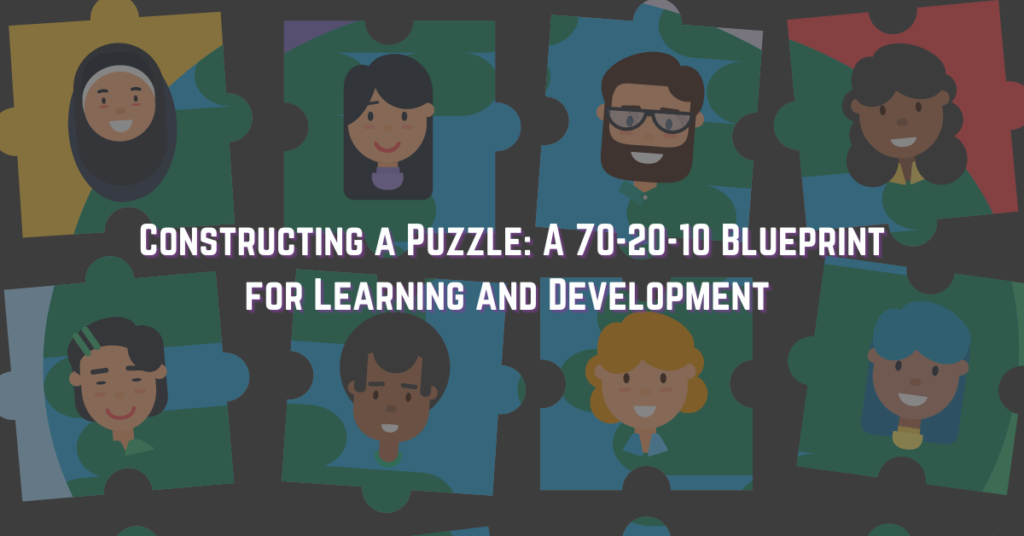
Introduction
In the world of learning and development, the 70-20-10 Model stands as a tried-and-true recipe for success. It emphasizes a balanced blend of on-the-job experience, social learning, and formal education. But let’s dive deeper into this model through an analogy that’s as relatable as your favorite jigsaw puzzle.
Piecing It Together: The On-the-Job Learning Puzzle
Picture yourself facing a challenging jigsaw puzzle. As you begin fitting the pieces together, you embark on a practical learning journey. Each piece you connect mirrors a problem you encounter in your quest for knowledge and growth. Just as solving the puzzle sharpens your skills, on-the-job experiences hone your abilities.
In your daily pursuits, challenges, and hands-on activities, you discover the puzzle pieces of your learning journey. Initially, it might seem daunting, but with determination and practice, solutions emerge. This hands-on experience constitutes the core of your growth, contributing a significant 70% to your development.
Teamwork Tactics: Solving the Social Learning Puzzle
At times, you may seek guidance from friends or join online puzzle-solving communities to exchange insights. Similarly, the 20% allocated to social learning in your overall development involves engaging with mentors, collaborating with peers, and immersing yourself in knowledge-sharing networks.
Just as discussing strategies with fellow puzzle enthusiasts yields fresh perspectives, engaging with others in your field fosters shared insights. It’s a realm where ideas flourish, feedback flows, and lessons are learned, enriching your problem-solving abilities.
The Blueprint Beneath: Formal Education’s Puzzle Piece
Now, imagine reading about puzzle-solving techniques and strategies. In your journey of learning and development, this is synonymous with the 10% attributed to formal education.
Formal education equips you with foundational knowledge and theoretical understanding, much like studying puzzle-solving theories and approaches. While it may not constitute the majority of your learning, it provides the structured foundation upon which you build your skills. It’s a reference point you apply and refine through on-the-job experiences and social learning interactions.
Finding the Right Pieces
Yes, learning and development is like solving a puzzle: it requires different pieces to form a complete picture. The 70-20-10 Model suggests that the best way to learn is by combining three types of pieces: 70% from experience, 20% from feedback, and 10% from formal education. This model is not a strict formula, but a flexible guide to help learners and organizations design a more balanced and effective learning environment. By using the 70-20-10 Model, learners and organizations can create a more human-centered and adaptive approach to professional development, fostering continuous improvement and innovation in a changing work world.
Final thoughts
In the grand scheme of learning and development, the analogy of constructing a puzzle beautifully illustrates how the 70-20-10 Model works. Just as solving a puzzle requires a blend of different elements, your journey of growth thrives on the right mix of hands-on experience, social learning, and formal education. Embrace this balanced approach, and watch your learning and development come together like a completed puzzle masterpiece.

